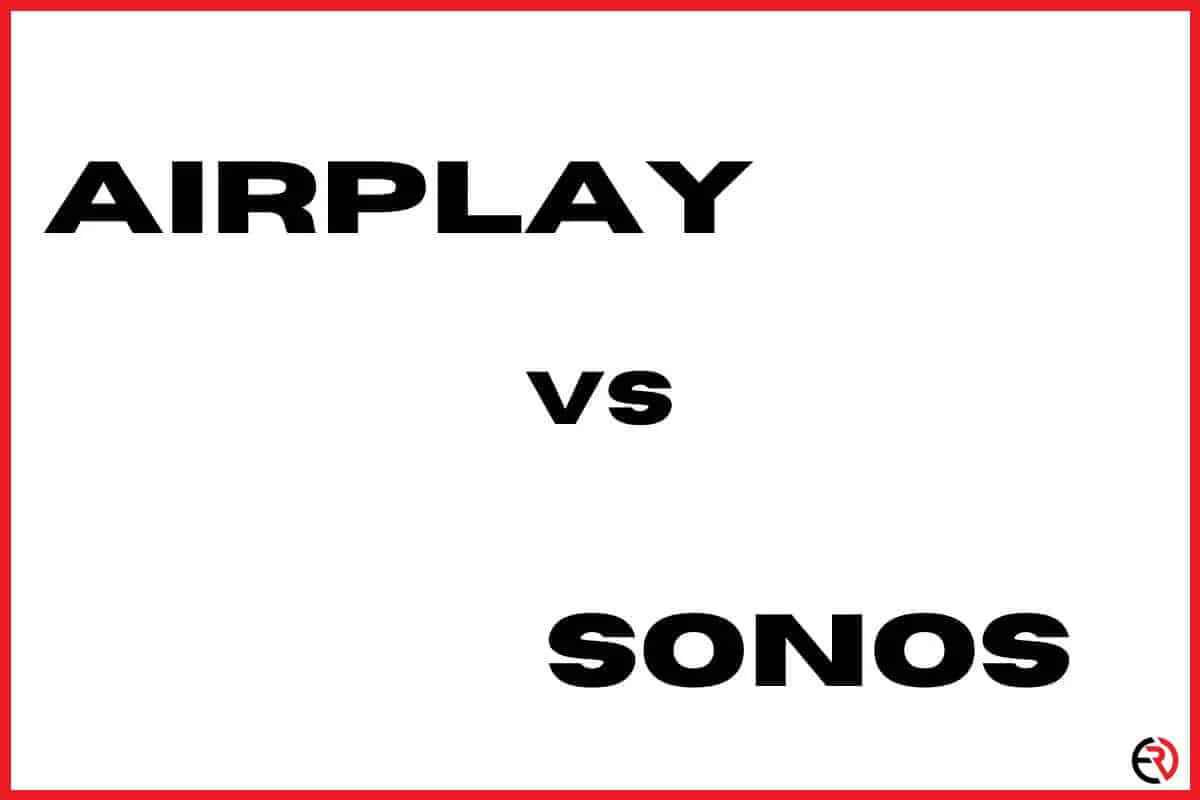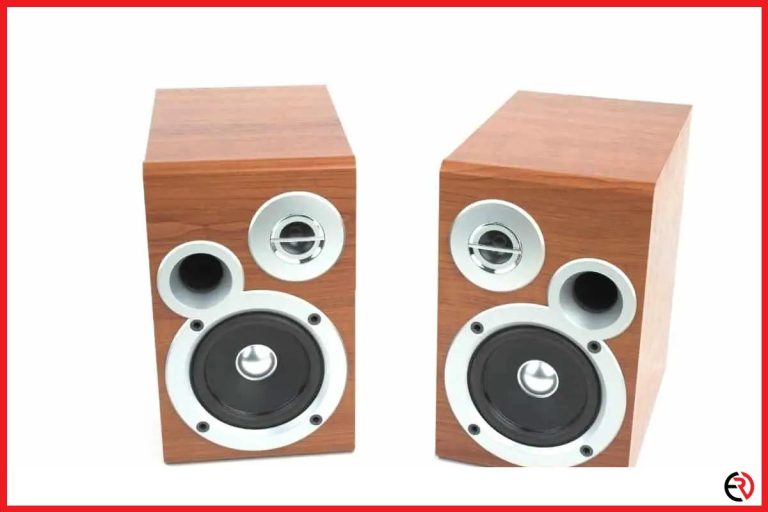Airplay vs Sonos (Pros & Cons)
This post may contain affiliate links which means that, if you choose to make a purchase, I may earn a small commission at no extra cost to you.
AirPlay and Sonos are the go-to options when it comes to home entertainment systems. While AirPlay is much simpler to use, Sonos offers a plethora of features that audiophiles like myself dream of. But that’s not all. There are other factors that distinguish a Sonos from AirPlay and in this guide, I will be discussing a few of them. So without further ado, let’s get started.
| Name → Properties ↓ | AirPlay | Sonos |
| Pros | All of the system’s features work with a single tap of the button, | Superior audio quality. |
| If the source is also streaming in HD, you can even mirror the quality. | Compatible with existing Sonos systems. | |
| While streaming in the background, you can multitask (play games, make notes). | Alexa integration is flawless. It’s almost the same as an Amazon Echo with little to no differences. | |
| Using the AirPlay feature, you can turn your Apple handheld devices into a portable remote controller. | Choose from a wide selection of music streaming platforms. | |
| It gains more bandwidth by piggybacking on Wi-Fi, allowing it to stream high-quality files without jitters or lags. | Voice-controlled music. | |
| The world’s fastest screencasting solutions. | You can also play music, even while Alexa is muted. | |
| When AirPlay is used in conjunction with Wi-Fi, its range is expanded. As long as it has access to your home Wi-Fi network, it can stream from anywhere in your house. | Also compatible with the latest Apple AirPlay 2 and Google Assistant. | |
| Cons | When multiple streaming devices are connected to a single streaming source, all of the devices will play the same content as the source. They cannot stream different media from a single source. | Setting up the device can be a bit complicated. |
| Only one app at a time can use AirPlay. It is not compatible with multiple applications at the same time. | Although Alexa works seamlessly, setting it up in the first place is quite difficult and it even costs twice as much as the Amazon Echo. | |
| Only AppleTV allows for video sharing. Furthermore, AirPlay is limited to iOS devices. with Apple devices. | Lacks Bluetooth and dedicated mount support. | |
| AirPlay Wi-Fi connections can lag from time to time. It also lags quite a bit when it’s connected only via Bluetooth and no Wi-Fi. | There is no way to disable the LED that glows when the microphone is on. Even the sound you hear when you say the wake word can not be muted. |
Now that you have a basic understanding of both streaming technologies, it’s time to dig a bit deeper. I have been using AirPlay ever since it debuted in 2004. For the sake of a fair comparison, I also set up a Sonos audio system a few months ago and have been testing both extensively.
As usual, I have divided the tests into personal and practical categories. The personal experiment consists of usability, affordability, setup, and other factors based on an individual’s opinion.
The practical tests include audio quality, lag, compatibility with other devices, availability, and other factors that strictly measure the tech’s performance in comparison to one another.
Which has the better audio quality?
AirPlay:
- AirPlay can stream lossless audio files up to 16-bit/44.1 kHz. The technology utilizes Apple’s Lossless Codec for CD-quality playback.
Sonos:
- Sonos is capable of streaming up to 24-bit/48kHz FLAC. Although tracks exceeding the 48 kHz sampling rate will be played at 16-bit/44.1 kHz. FLAC.
Winner: Sonos
At face value, Sonos seems to pack the bigger punch. AirPlay cannot stream over 16-bit audio and although it’s sure to change in the future, for now, Sonos takes the crown.
Which is easier to set up?
AirPlay:
- AirPlay is a technology developed by Apple that lets you stream media either across Apple or third-party devices that support AirPlay. All you need is a device (Mac, Apple TV, or any third-party AirPlay-compatible device) that supports the feature and you are good to go. Here is how you can stream using AirPlay:
1. Go into the settings of your Apple TV or any other device that supports the feature.
2. Then go to Genera > Network > Apple AirPlay Settings and switch it on. You can also choose how your device connects with the Apple TV.
3. Once everything is set up, simply play something on your iPhone and swipe down the notification panel.
4. Tap on the AirPlay icon and choose the speaker or TV you want to play the audio on in your house to redirect the stream to the selected device.
Sonos:
- Sonos uses a combination of its in-built network and Wi-Fi to stream music from online platforms such as Amazon Music, Spotify, and Pandora or music files you have downloaded on your computer.
- It’s a self-contained ecosystem of Sonos speakers that can be controlled either by the Sonos app or even AirPlay. Here are the steps:
1. To control Sonos speakers with the Sonos app, install and launch the app on your phone.
2. Sign in using your email ID.
3. Tap Continue to search for your speakers and select it.
4. To pair both, press the pair button on your Sonos speakers and wait for the phone to connect, then select the room the speakers are in.
5. Add the music service.
Winner: Tie
The Sonos and Airplay were quite easy to set up. I read a few reviews where users complained they had trouble setting up the Sonos speakers, but I did not have any trouble whatsoever.
Which one is easier to use?
AirPlay:
- Apple AirPlay is a wireless communication protocol, much like Bluetooth on steroids. There is no exclusive feature. You simply stream whatever you’re playing on your phone to another supported device.
Sonos:
- Sonos is an entire ecosystem of speakers. Once you have installed the app, you can control all the speakers in your house no matter where you are. So instead of simply ‘casting’ audio to speakers, you can choose exactly which speaker(s) you want to play the music on.
Winner: AirPlay
AirPlay is much easier to use. You can cast music to any supported speaker with a single tap. Although Sonos operates similarly, most users don’t prefer the extra setup required initially.
Which one has more features?
AirPlay:
- This makes AirPlay much more accessible and easier to use, but it is not as feature-rich as the Sonos ecosystem.
Sonos:
- Sonos offers several features and is user-friendly once you get used to it. Sonos operates similarly to Apple HomeKit, where you can group speakers and control all of them at once.
Winner: Sonos
AirPlay is merely a communication protocol, whereas Sonos is a complete control center in and of itself, giving it the edge by a huge margin.
Which one is cost-effective?
AirPlay:
- AirPlay is a free service. You don’t have to pay for it as the feature is built into every compatible Apple device. Nowadays, even some third-party manufacturers support AirPlay out-of-the-box.
Sonos:
- Sonos speakers are expensive, as you can see from the Sonos Arc. However, the overall audio quality does impact your listening performance and sounds way better than any speaker in that price range. I have been using a JBL speaker setup for about 2 years and was quite satisfied with it until I experienced the Sonos Arc.
Winner: Tie
It’s a tie because the overall audio quality of the Arc is worth the extra buck. AirPlay may be free, but it’s nowhere near as good as the Sonos Arc. I don’t know about the rest of the Sonos speakers. There may be better alternatives in the price segment, but after witnessing what the Sonos Arc is capable of, I am sticking to my decision.
Conclusion
AirPlay and Sonos are different technologies, and both have advantages and disadvantages. If you want a simple setup and already have a few devices in your home (Apple TV, iPhone, HomeKit), then there is no use in investing in a dedicated Sonos system. However, if you’re new to the scene and want value for your money, getting a Sonos system or at least a Sonos Arc is a good idea. Stay tuned for more tech tips in the future.







